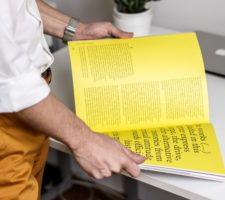Use marginal media or blog posts
Suspicious messages are often disseminated by marginal media with fixed names, claiming that they come from reputable media.
Several Russian media outlets, including the business newspaper Vzglyad, quoted “Western media” as reporting a disagreement over the repatriation of 13 American bodies in Ukraine during the fighting.
But the “Western media” that Vzglyad quoted was an unreliable online magazine, The European Union Times, StopFake was told. Newspaper links went to the website WhatDoesItMean.com. The author of this novelty, Sorcha Faal, was an invented figure who spread rumors.
You can combat this type of manipulation by going to the sources cited and assessing their credibility.
In another case, Russian media quoted an anonymous blog post, Stopfake found. On August 16, 2015, RIA Novosti of Russia published an article on the Malaysian Airlines accident. The source was the German portal Propagandaschau. The portal published a statement by someone nicknamed “Doc” and an article by Patrick Armstrong, a former political adviser at the Canadian Embassy in Russia, published on the Russian website Russia Insider. RIA Novosti and RT presented Doc’s comment as an expert analysis. The Russian media did not mention Armstrong’s article, which contains previously disputed allegations.
Exchanging real-time message from reputable media
“Fake news” can circumvent news reported by reputable media.
For example, a photo taken from a CNN broadcast digitally added a quote from California Congressman Maxine Waters about bringing President Trump to the Supreme Court, Snopes and Politifact write.
The quote wasn’t really his at all, and his picture is taken from an interview he did on another topic.
References to non-existent reports from reliable media
Russian and Moldovan websites spread the false story that originally appeared in December 2017, claiming that a gold mine was found in Crimea. Moldovan news site reported on February 10, 2016 that Russian geologists discovered the world’s largest gold mine.
The alleged source of this story was Bloomberg, but the hyperlink did not go to the site, which is the first sign that the news may be fakes. A search on Bloomberg’s website and Google didn’t show any such story, Stopfake found.
In another case, the WhatsApp report on a falsified election investigation in India was made more credible by including a link to the BBC website, even though the BBC had not reported the survey, according to a BOOM analysis.



